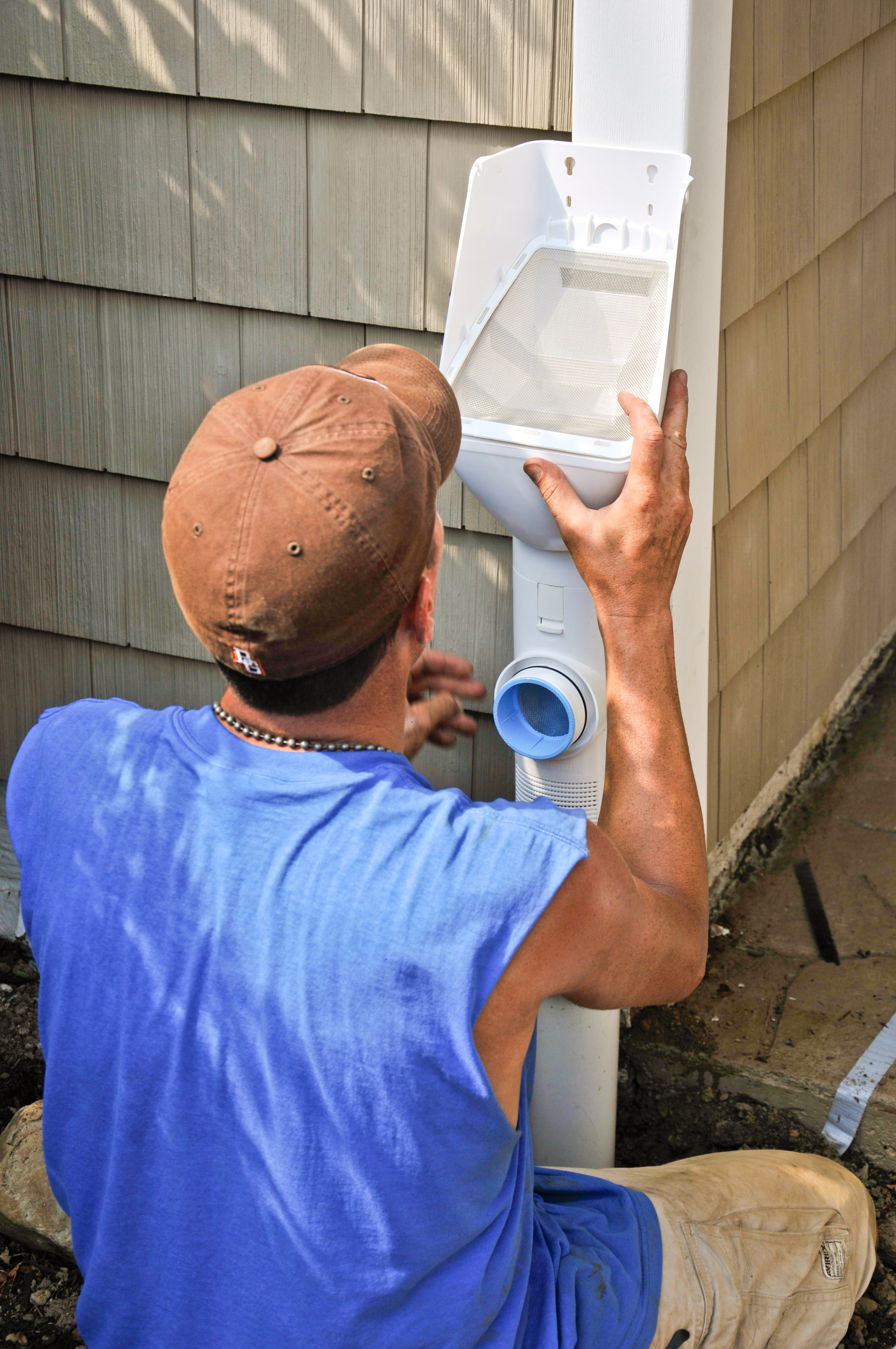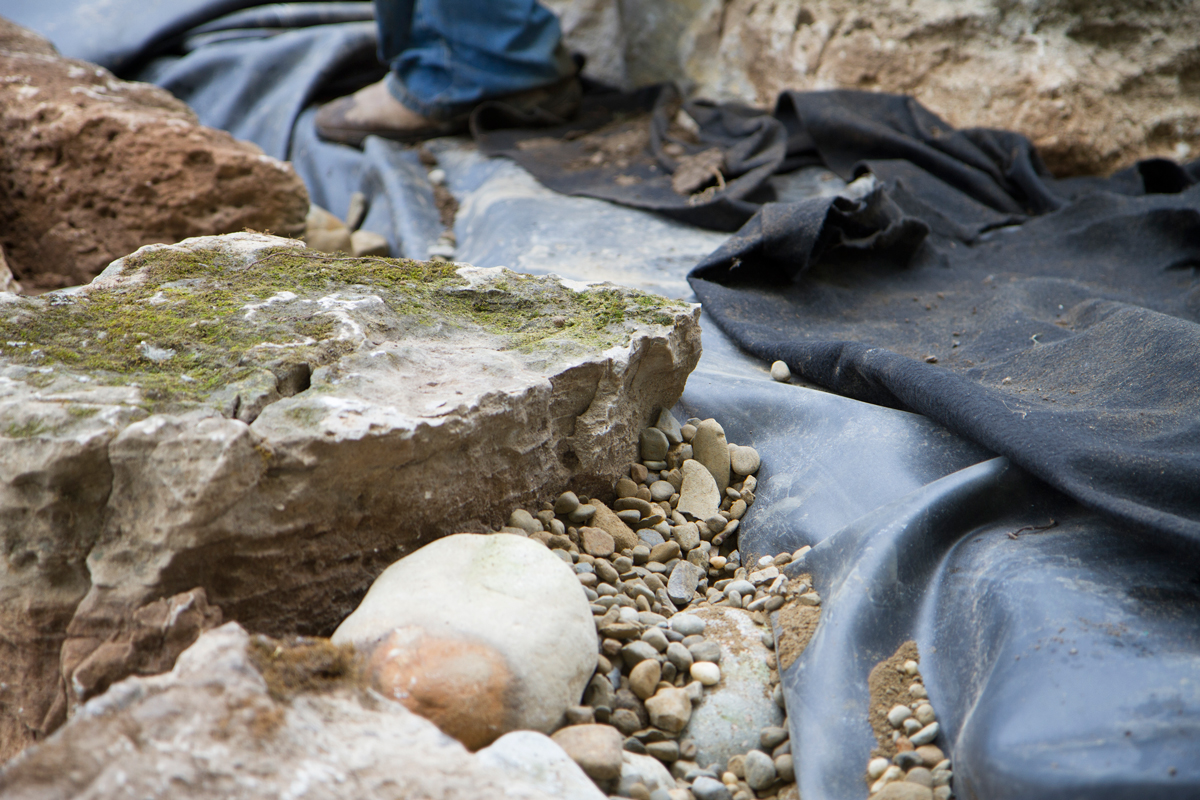Pond-Free 103 Chapter 8
Helpful Tips Before Rocking
This text can’t teach much about actually placing rocks artistically, but then again there’s no better way to learn than by doing. Here are a couple of tips that may prove helpful before you rock the feature.
- Grade the soil surrounding the reservoir in a shallow bowl with a slight rim, to capture any splash that falls inside the liner but also exclude any external water from washing in to the reservoir. Outside water sources can carry all sorts of nasty runoff that may cause maintenance issues such as algae blooms and off-odors.
-
 To keep the feature topped off naturally, install a Rainwater Harvesting First Flush Downspout Diverter. These devices direct the first 10-15 gallons of water during a rain event to waste, and when the roof is completely rinsed off, it shunts the now-clean rainwater into the reservoir to top off the feature automatically. It even resets itself automatically, ready for the next rainfall.
To keep the feature topped off naturally, install a Rainwater Harvesting First Flush Downspout Diverter. These devices direct the first 10-15 gallons of water during a rain event to waste, and when the roof is completely rinsed off, it shunts the now-clean rainwater into the reservoir to top off the feature automatically. It even resets itself automatically, ready for the next rainfall.
- Before rocking the stream and reservoir edges, take some lengths of 1.5” or 2” scrap tubing and lay them on the liner in the areas you might want to place future lights, to serve as conduits for cords. Set conduits with the inner end near where you’d set a light and with the outer end outside, and of course above, the liner. Put conduits on either side of the main waterfalls and anywhere else that might benefit from a light, even if you don’t actually install lights in them to start with, then hide the conduits under your rockwork as you build. Put more conduits in than you may need right away - they’re there if you ever need them and they make changing lights in and out a breeze.

This text can’t teach much about actually placing rocks artistically, but then again there’s no better way to learn than by doing. Here are a couple of tips that may prove helpful before you rock the feature.
- Grade the soil surrounding the reservoir in a shallow bowl with a slight rim, to capture any splash that falls inside the liner but also exclude any external water from washing in to the reservoir. Outside water sources can carry all sorts of nasty runoff that may cause maintenance issues such as algae blooms and off-odors.
-
To keep the feature topped off naturally, install a Rainwater Harvesting First Flush Downspout Diverter. These devices direct the first 10-15 gallons of water during a rain event to waste, and when the roof is completely rinsed off, it shunts the now-clean rainwater into the reservoir to top off the feature automatically. It even resets itself automatically, ready for the next rainfall.

- Before rocking the stream and reservoir edges, take some lengths of 1.5” or 2” scrap tubing and lay them on the liner in the areas you might want to place future lights, to serve as conduits for cords. Set conduits with the inner end near where you’d set a light and with the outer end outside, and of course above, the liner. Put conduits on either side of the main waterfalls and anywhere else that might benefit from a light, even if you don’t actually install lights in them to start with, then hide the conduits under your rockwork as you build. Put more conduits in than you may need right away - they’re there if you ever need them and they make changing lights in and out a breeze.





